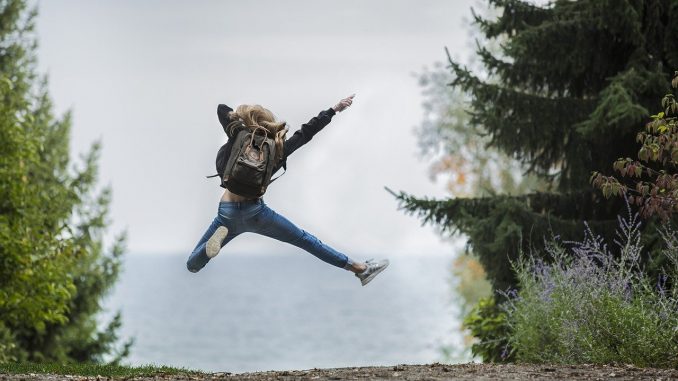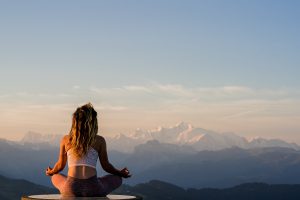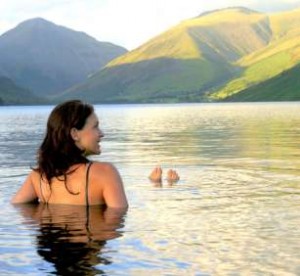
2020 has been a real physical and mental challenge for everyone, leaving many with Long Covid, mental health problems and generally in need of a way to bounce back with resilience. Having suffered with Chronic Lyme Disease, I have spent the last ten years researching ways to improve your immune system due to having chronic Lyme Disease. I spent some of the time working with consultant Anna Goodman from Guys and St Thomas hospital in London, who has done a lot of research into treatment for Covid19.
My aim was to become more physically and mentally resilient so that I can be there for my wife and children as long as possible and live my later years with a good quality of life. Just like the advice to take out a pension plan early on in life, most of us leave it until things become a problem.
Always take medical advice from your doctor before embarking on any changes that may impact your health.
It is never too late to make a difference in your life. Doing something is better than doing nothing. You have to look after yourself because when it comes down to it, no one else will.
Chronic Lyme Disease, ME and Long Covid all seem to have a common set of symptoms;
- pain,
- exhaustion,
- headaches
- heart palpitations when at rest,
- food intolerance
- anxiety, and a sense of unease or agitation
- brain fog, memory problems, difficulty to focus,
- extreme physical tension.
I think that one of the key differences though may be in relation to respiratory problems from Covid. The UK government is funding research to find out how Long Covid can be addressed.
This year more and more people who have long Covid are saying that they have discovered the techniques detailed below to relieve their symptoms. My belief is that the situation is initially caused by an immune system response that is lingering and perpetually exhausting the patient. On top of that, uncertainty about their condition causes anxiety, which leads to unconscious learned physical responses to the mental and physical stress their bodies are suffering. There is a way to break this cycle though. I hope it works for you as it has for many others.
Here is what I have learned.
1. REST! SLEEP!
You are feeling absolutely exhausted, but not necessarily every day. Some days you will feel fine, but others feel really crap. You need to be kind to yourself. Treat yourself as your best friend.
One of the best pieces of advice I came across was to treat each day as you feel. If you are feeling exhausted, then take it easy. If you are feeling OK, do a bit more, but be gentle! You have to very gradually build up to things. It is so easy to over do it.
Getting good quality rest and sleep is vital. If you aren’t feeling refreshed after sleeping at night, try to avoid some of the daytime naps so that you do most of your sleeping at night. But, if you need to nap in the day, then do so.
As you settle yourself down to sleep, think about how you would like to feel. Imagine that what it would be like if it were possible. You will get negative thoughts about not ever feeling well again, and that is to be expected, but you need to give yourself permission to relax and visualise the feelings associated with feeling great. What would you love to be able to do? Where would you like to go? What new experience or skill would you like to have?
The key message is to take things gently. Now is not a time to be competitive. If you don’t do well today, that is just today. Tomorrow is another unique day that may well be a good one for you. Imagine good fortune finding you and following you wherever you go. Every thing you do, however small is another little step in the right direction, as long as you keep focused on your intention of being kind to yourself.
2. Distract Your Mind from Destructive Thoughts
 The most important thing I found was that however mentally strong you think you are, your mind will identify what you focus on wherever you go. If you are not feeling 100% and that is a concern for you, your mind will just keep dwelling on it over and over and over. Although you should seek medical advice for any ailment you think you may have, I found that giving your mind a break and stopping the perpetual destructive cycle of going over and over your problems is a hugely powerful thing.
The most important thing I found was that however mentally strong you think you are, your mind will identify what you focus on wherever you go. If you are not feeling 100% and that is a concern for you, your mind will just keep dwelling on it over and over and over. Although you should seek medical advice for any ailment you think you may have, I found that giving your mind a break and stopping the perpetual destructive cycle of going over and over your problems is a hugely powerful thing.
I was advised that mindfulness is brilliant for getting away from the day to day stresses and relaxing. Oh boy does it cause problems if you are one of those people whose minds are always going full tilt. Sitting still and being aware of how I felt and what was happening around me was a hugely stressful experience. Not relaxing at all. In fact, more and more research is showing that mindfulness causes anxiety and can be detrimental to some people’s mental health.
What you need is a way to distract your mind.
Counselling or cognitive behavioural therapy (CBT) can help with the process of getting you head in the right space. Make sure any therapy is right for you though. Ask lots of questions.
Mindful Movement
 What I eventually worked out after trying meditation and other relaxation techniques was that mindful movement worked wonders in disengaging the mind from negative thoughts and stress. Any activity that forces you to physically interact with the real world in a focussed manner stops the negative mental cycle of thoughts. This is because the activity requires your full attention.
What I eventually worked out after trying meditation and other relaxation techniques was that mindful movement worked wonders in disengaging the mind from negative thoughts and stress. Any activity that forces you to physically interact with the real world in a focussed manner stops the negative mental cycle of thoughts. This is because the activity requires your full attention.
Going for a walk does not help. However, walking in a particular way does, such as walking barefoot and paying attention to everything your feet feel. The textures of the ground, the difference in temperature of grass as you walk from sunshine into the shade, or even lovely warm sand beneath your feet.
Mountain biking is another brilliant activity for mindful movement. Going downhill on a rooty and uneven trail forces you to focus on what you are doing or risk falling off. Your mind doesn’t have the opportunity to dwell on any of your worries.
Stand Up Paddle Boarding is also great for focussing on reality. It also is a great way to develop your sense of balance in the great outdoors.
Another activity that people are finding works wonders is Chi Kung; in particular the Ba Duan Jin exercises. These exercises help your mind and body, calming the mind, stretching and relaxing the body, and helping with the circulation of you blood and lymphatic system.
3. Balance

In your later years, balance becomes a vital skill to have to prevent trips and falls. Developing your sense of balance while you are young and maintaining it is absolutely essential for later life. There are plenty of ways you can have fun becoming more balanced.
- Stand Up Paddleboarding
- Learn to ride a Unicycle
- Slacklines
- Skateboarding, snowboarding or surfing
- Balance boards
- Hover Boards
- Tai Chi
4. Stretching
Most of us find ourselves sitting still for a long time, either at work or watching TV. Research has recently proven that dynamic sitting is a great way to avoid heart disease and other diseases of the more industrialised world.
Stretching is a must for getting rid of those knotted and stiff muscles, tendons and joints.
Have you lost your flexibility? When you are young you think it will last forever, but slowly and surely your flexibility and mobility creep away right under your nose. It is all too easy when you feel stiff to decide to give the gym a miss because that would just aggravate the problem. Perhaps you just need to sit down put on Netflix and rest up.
Like so many of us, we tend not to stretch regularly or don’t know how to stretch in a way that will maintain or improve key movement.
Do not worry though; it is not gone forever, but you need to go about stretching properly. Too many stretches are assumed to work when they are in fact straining your muscles or making your flexibility worse.
Proper physiotherapist designed stretches that target the problem area can more than double the effectiveness of a stretch when you know how. If you don’t have access to a physiotherapist who can advise you, I highly recommend Milo Kemp’s book Use it or Lose It.
This was an awesome and comprehensive read, with fantastic images illustrating the stretches and clear, concise descriptions on how to do them properly. It makes the case for how important it is for people to keep their mobility and flexibility, especially as you get older. It covers:
- Stretches to manage mobility limiting diseases such as arthritis
- A routine to make the most musclebound gym-goer as flexible as a gymnast
- You will discover the reasons stretching is important you may not have known
- How to unlock your mind-body balance and the inner peace that provides
- Discover how to build on newfound mobility to live a healthier happier life.
5. Gradually Building Up Aerobic Exercises
 Building up your heart and lung capacity for exercise is a good long term investment, but you must do this gradually. Always consult your doctor before embarking on any new significant exercise regime.
Building up your heart and lung capacity for exercise is a good long term investment, but you must do this gradually. Always consult your doctor before embarking on any new significant exercise regime.
The lymphatic system is part of your immune system that gets rid of the waste. Unlike your blood, it doesn’t have anything to pump it around the body. This is done whenever you physically move. So you need to move enough to make sure your lymphatic system works well.
Running, Cycling, Swimming and Outdoor Bootcamps are all great for being accessible ways to improve your aerobic fitness. I know how hard it is to motivate yourself to go running on your own and found that joining a running club really helps. I love the social aspect of my running club. Everyone is friendly and will chat or leave you be as you wish. Choose a club that suits your running ability. There are many clubs that help you to go from Couch to 5K. At 5 kilometres you will be able to complete a Parkrun.
It is VERY important that you very gradually build up your physical ability. It took me 3 months as a reasonably fit person who sat at a desk all day and never exercised to go from couch to 5K. I felt I could do it quicker, but knew that I would regret progressing too quickly. Run how you feel on the day. Don’t run to keep up with your goals. It is good to have something to aim for, but don’t beat yourself up if you don’t get there just yet. You will eventually with determination.
Exercising with someone is great for distracting your mind from the physical challenge. Having a chat on a parkrun always gives me better times. I am not an elite athlete, but I am investing in my long term health. That is what is important.
Hill Sprints are the next level up, and are perfect for building up your VO2 Max. This is where you find a short suitable hill and spend 5 minutes sprinting up it and jogging down it. You should run so that you are just beginning to get out of breath. If you find you are hauling your lungs trying to breath you need to stop and get your breath back. Workout with how you are feeling on the day. Some days you will be awesome, others you will be disappointed. It doesn’t matter as long as you do something.
You can find out the science behind hill sprints and the 5 minute high intensity training approach in the BBC documentary Michael Moseley The Truth About Getting Fit
The Royal Canadian Airforce 5BX and XBX exercises are another way of improving your fitness in a controlled manner. To ensure that their aircrews were fit, they asked doctors to devise a series of exercises that could be done daily to maintain physical fitness and health. In 12 minutes per day, you can improve your general wellbeing without any equipment.
Aerobic exercise has been shown to support T cell response, which is a key part of the immune system. T cells are generated in the Thymus. Research shows that physical exercise induces a substantial re-distribution of T-cells within lymphoid and non-lymphoid organs, which has a positive effect on lymphocyte trafficking and enhances your body’s immune surveillance and vigilance.
6. Strength Exercises
Strength exercises that use your body weight are all you need to keep yourself in pretty good shape. Lifting irregular objects helps your mind and body by having to adjust each time to work out how to use your muscles to lift. Gym weights are too repetitive and don’t allow your body to cope with unusual or unexpectedly unbalanced objects.
You don’t need to use weights for strength exercises. Press ups, sit ups, chin ups and hand stands are pretty effective. Hand stands also help with developing balance. For hardcore strength, see if you can build up to the ultimate inverted handstand pressup!
The only equipment you really need is a yoga mat and some resistance bands.
Once again, the 5BX and XBX exercises can be used for developing functional fitness and strength.
7. Cold Water Showers or Swimming
 Wild swimming is the age old practise of swimming in natural waters.
Wild swimming is the age old practise of swimming in natural waters.
The effects of cold water on improving the immune system have been studied widely. Cold water helps to boost the white blood cell count because the body is forced to react to changing conditions. Over time, your body becomes better at activating the immune system defences. Cold water swimming activates endorphins, which is the chemical that the brain produces to make us feel good during activities. When endorphins are released when we’re in pain, it helps us to cope with it.
Cold water immersion (yes you can also do it by having a cold shower) causes a stress response. If you do it on a regular basis, over time you learn to calm yourself and your breathing to cope with being in the cold water. This has a natural effect of also triggering your responses to anxiety and stress by your mind and body being able to calm itself more readily. Cold water immersion has also been shown to help cope with peripheral neuropathy and pain that medicines can’t always treat.
This has been experimentally proven on the BBC health series by the Van Tulleken doctor twins. In the TV series “The Doctor Who Gave Up Drugs” they tried to get people with chronic pain to reduce the amount of prescription drugs they were on by using some lifestyle changes. The most successful techniques were from cold water swimming with a friend (on your own didn’t distract the mind enough) or tai chi type exercises.
You can find out lots more about how it all works from the book Way of the Iceman by Wim Hof .
Science has now proved that the legendary Wim Hof Method of breath control and cold-training can dramatically enhance energy levels, improve circulation, reduce stress, boost the immune system, strengthen the body and successfully combat many diseases. While Wim Hof himself has run marathons in -30oC in shorts, swum hundreds of meters under the ice, sat in a tank of ice for 90 minutes without his core temperature changing and boosted his metabolism by over 300%, this book documents how anyone can use Wims methods to transform their health and strength, quickly and safely.
8. Nutrition and Fasting
Long Covid and Chronic Lyme Diesease both cause food intolerance. Histamine is apparently involved. Once you have got over the initial infection you find that after certain meals you feel really crap. It took me ages to work out that I needed to limit cheese, potatoes, sugar, chocolate and yeast. A food diary will help you log what you eat and how you feel in the next 24 hours afterwards. You soon see the pattern. After a month or so, I was able to reintroduce them into my diet.
Eating the right nutrition for you can be a challenge at times. Mood, money and health can impact on what you choose to eat. Your gut is astonishingly clever. It contains millions of neurons – as many as you would find in the head of a cat. By eating the right combination of food and feeding the trillions of microbes in your microbiome, you can influence our mood, weight and immune system via the vagus nerve.
The growing consensus from research into what diet maximises longevity, the verdict seems to be a vegan core, with fish. If you don’t want to go all in straightaway, minimise red meat, and increase your intake of fresh fruit and vegetables. You should make the food on your plate as varied in colour as possible. Dark green leafy veg is high in iron. Purple fruits and vegetables are rich in anthocyanins, which are natural plant pigments that provide foods with their unique colour. Studies have shown that anthocyanins may benefit brain health, help to lower inflammation, and fight cancer and heart disease.
Gradually increase the right foods rather than focusing on cutting out the wrong foods. Over time you will begin to want to eat more of the right things and reduce your indulgent intake.
There is growing evidence that intermittent fasting extends life span and ameliorates aging-related diseases. This is because it switches your genes from reproduction mode into repair/survival mode. There are several ways to do this from only eating between 10 am and 8pm, or limiting calorie intake on one day of the week. Take medical advice before undertaking any form of dramatic change in dietary intake.
9. Experience Awesome Beauty

Being outdoors somewhere with a spectacular view is really good for the mind, body and soul. During the year of Covid-19, more people have been getting out to explore the countryside. Some though don’t seem to get the idea of being outdoors just for the pleasure of it. Fights have broken out queuing to get to the top of Snowdon in Wales as people just want to tick it off with a selfie.
Part of the pleasure and restorative quality of nature is that you can take on that physical challenge to get to the top of a summit, and then just sit there and enjoy the view. Find your own summit rather than go for the popular ones. Even the view of London from Greenwich Park is most satisfying to just sit and look at.
Get Out More for Your Vitamin D
We need vitamin D to help the body absorb calcium and phosphate from our diet. These minerals are important for healthy bones, teeth and muscles. Research shows that more Vitamin D supports T Cell production, which is a key part of your immune system.
Our body creates vitamin D from direct sunlight on our skin when we’re outdoors. From about late March/early April to the end of September, most people should be able to get all the vitamin D we need from sunlight.
We also get some vitamin D from a small number of foods, including oily fish such as salmon, mackerel, herring and sardines, as well as red meat and eggs. Since the winter months tend not to provide enough sunlight to produce the amount of Vitamin D we need, sounds like a good excuse to spend the evenings indoors somewhere nice and cosy with some great food to share with friends and family.
10. Shared Social Experiences
 Science has shown that those who have a healthy social life live longer. That social connection helps your mind to stop dwelling on your own issues. One of the best ways to improve any social relationship is to share an experience together. Doing an outdoor activity with your partner will bring you closer together and strengthen your love.
Science has shown that those who have a healthy social life live longer. That social connection helps your mind to stop dwelling on your own issues. One of the best ways to improve any social relationship is to share an experience together. Doing an outdoor activity with your partner will bring you closer together and strengthen your love.
Learning something new together is a great way to get to know other people better. A great outdoor activity for teams is sailing.
11. Learn a new Skill
Learning a new skill has been shown to rewire your brain and improve your mental abilities. If that skill involves some form of physical activity, then you are developing your entire mind and body connection. This pays dividends in the long run.
Top outdoor skills to learn include:
- Bushcraft
- Navigation
- Board sports
- Sailing
- Target sports such as archery, golf or shooting
- Flying
- Circus skills
- Slacklining
- Scuba diving
- Outdoor arts and crafts
12. Gratitude
There are a variety of things that can conjure positive feelings of appreciation or gratitude that may guide you towards meaning and better health.
The Harvard Medical School provides more detail, writing that gratitude is:
“a thankful appreciation for what an individual receives, whether tangible or intangible. With gratitude, people acknowledge the goodness in their lives … As a result, gratitude also helps people connect to something larger than themselves as individuals–whether to other people, nature, or a higher power.”
You will come across lots of websites saying that gratitude journals are great for improving your mental health and attracting more positive things into your life. As an engineer, I queried how that might work. I couldn’t get used to saying “thankyou for X that happened today.” Who or what was I saying thankyou to? What I did find that worked was to rephrase it by saying it as ” I am glad that X happened today.” Using this framing allowed me to connect with the sentiment and led me to being able to focus on all of the positive experiences I was having. Over time, I could see more and more of the great things that I experienced. What a mood booster.
If you want some inspiration on things to do outdoors that will help you on your journey, the complete outdoor activities list is the best place to start. May good fortune find you and follow you wherever you go, whatever you do.
